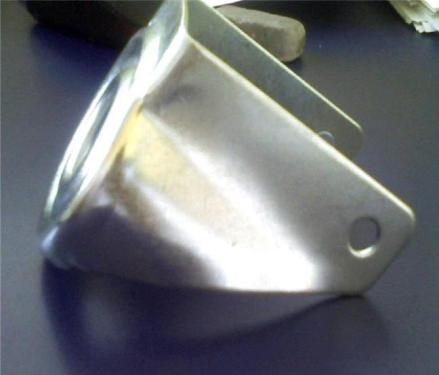 In the heat-affected zone (HAZ), the recrystallized microstructure is damaged during the steel manufacturing process, so the problem of toughness reduction sometimes arises. To ensure the toughness of HAZ and the welding of the base metal, Nippon Steel has developed a technology to improve the HAZ toughness of high-performance thick steel plates by utilizing the phase transformation in the grains, which uses "intragranular ferrite (IGF) that uses non-metallic inclusions. ")" can effectively refine the grain size (deff), increase the toughness of the HAZ matrix, and reduce the hard embrittlement phase that will cause fracture. This technology has been applied to the actual.
In the heat-affected zone (HAZ), the recrystallized microstructure is damaged during the steel manufacturing process, so the problem of toughness reduction sometimes arises. To ensure the toughness of HAZ and the welding of the base metal, Nippon Steel has developed a technology to improve the HAZ toughness of high-performance thick steel plates by utilizing the phase transformation in the grains, which uses "intragranular ferrite (IGF) that uses non-metallic inclusions. ")" can effectively refine the grain size (deff), increase the toughness of the HAZ matrix, and reduce the hard embrittlement phase that will cause fracture. This technology has been applied to the actual. Regarding the mechanism of IGF phase transformation, Nippon Steel mainly deals with the composition of steel, thermal hysteresis, solute atoms near the interface of non-metallic inclusions/mother interfaces (also called "lean regions"), thermal expansion due to non-metallic inclusions and matrix. The elastic deformation energy produced by different coefficients, the non-metallic inclusion/austenitic parent phase, and the non-metallic inclusion/coherence (interfacial energy) of the ferrite interface lattice were studied. Among them, in the case where the composition and the thermal hysteresis are the same, it is considered that the lacking layer of the solute atoms in the vicinity of the non-metallic inclusion/parent phase interface has a large influence.
Experiments show that the lack of solute atoms will affect the driving force of the phase change around the generating nucleus. The heat treatment will cause the loss of the missing layer and disappear the driving force of the phase change. For example, based on the simulation results of MnS (1.0 to 1.5% Mn steel), the depth of the Mn-depleted layer (with the volume concentration of the Mn concentration at the interface) decreases after the S diffusion at the austenite/MnS interface. The maximum concentration difference is about 0.2-0.4%. In addition, the diffusion rate of S is very fast. In the case where the interface concentration is equal to the volume concentration, the depth of the layer is less than about 1%, and the width is about several hundred nm. The Mn-deficient layer actually measured by a TEM (Transmission Electron Microscope) shows that the depth of the Mn-deficient layer is related to the S concentration and thermal hysteresis, and the weight is 0 to 1.0%, which is basically the same as the simulated weight.
In addition, the results of Nippon Steel's investigation of the lacking layers in the TiN-MnS steel composition (S=0.0038%) showed that the phase change behavior was different due to the different holding temperatures at high temperatures. The Mn concentration around the non-metallic inclusions of the sample kept at 1000 s at 1523 K did not decrease, while at 1373 K for 100 s and 1000 s, the decrease in Mn was 0.4% and 0.2%, respectively. Since the decrease of the Mn concentration at the interface will increase the phase transition temperature by about 10°C (corresponding to 0.2% of Mn), it is considered that it contributes to the generation of IGF. The above measured results are the same as the calculated Mn concentration distribution in the austenite accompanying dissolution and precipitation of MnS, and it follows that the formation of such a Mn-deficient layer (thin lean region) has a great effect on the refinement of the steel structure. .
Nippon Steel uses the intragranular transformation control microstructure technology to produce high-strength, high-strength steels with high HAZ toughness.
Rubber Pad,Pad Printing Pads,Pad Printing Accessories
Wuxi Xinshijie Roll Forming Machinery Co., Ltd. , http://www.cn-rollformingmachine.com